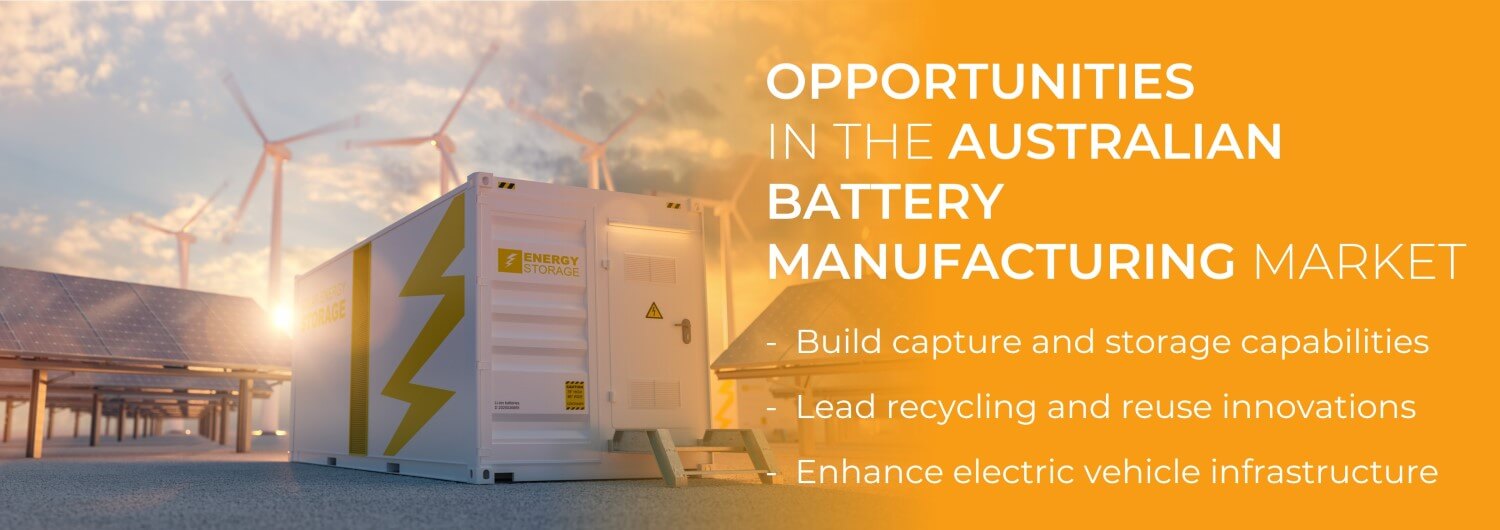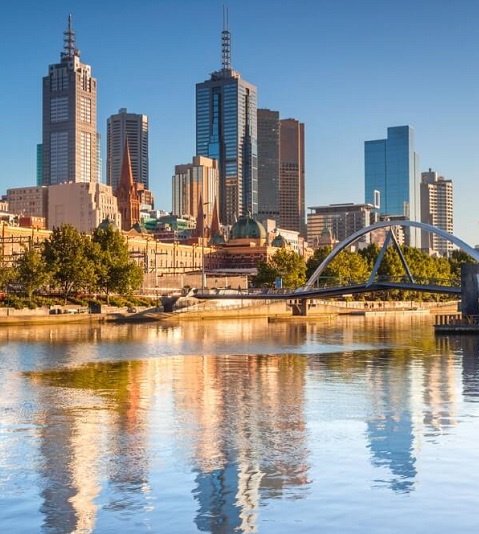软件即服务

Increased national demand for clean energy storage. Lower production costs. Why not capitalise on a perfect storm here in Victoria?
Australia's Renewable Energy Target (RET) mandates that until 2030, 33,000 GWh of Australia's annual electricity output must be sourced from renewable sources. With 510,000 small-scale solar PV systems in Victoria generating almost a third of the state’s total residential electricity demand1, battery production is forecast to see 25 per cent2 annual growth.
Combine this with lower production costs in battery production and generous grants for large-scale battery storage projects, and you’ll see why Victoria’s battery manufacturing sector is poised to deliver further investor returns across the supply chain, from concept to commercialisation.
Join innovators such as Volgren, Envirostream, SupraG Energy, Chargefox, Reposit, GreenSync, Redback Technologies, Selectronic and Powerplus who are modernising the state’s electricity grid, supporting new renewable energy capacity and improving reliability of power supply in battery production.
1. Australian Energy Market Operator: NEM Electricity Statement of Opportunities
2. Future Charge: Building Australia’s Battery Industries, June 2021
Opportunities across the battery supply chain
Establish local active minerals refining capacity
Victoria’s unparalleled access to mineral elements required for lithium-ion battery production opens enormous local manufacturing opportunities in Melbourne to enable you to service global value chains.
Build energy capture and storage capabilities
There is unmet demand for innovative and cost-effective batteries in Victoria and Australia. With a growing number of residential roof top solar, battery storage uptake is expected to reach unprecedented levels alongside firm support from the Victorian Government.
Lead recycling and reuse innovations
Innovate to refurb and reuse nationwide batteries that have reached their end of life in Victoria. The majority of Australian battery waste is currently shipped overseas.
Enhance electric vehicle infrastructure
Deliver charging infrastructure to accompany the rapidly growing demand for electric vehicles in Australia. Victoria is pioneering clean tech infrastructure, with zero emission vehicles set to make up 50 per cent of all new light vehicle sales by 2030.
Why Melbourne for your battery manufacturing project?
Base yourself on the doorstep of a critical minerals ‘gold mine’
- Melbourne is home to some of Australia’s largest mineral companies, providing unparalleled access to the mineral elements required for lithium-ion battery production.
- Australia currently produces eight of the nine key elements required in the battery value chain and has commercial reserves of the remaining element graphite.
- Australia leads the world in lithium production, while possessing high levels of reserves for other critical minerals.
Gain a competitive edge with the cost advantages of a Melbourne operation
- Enjoy competitive savings on materials, production, security, and logistics in Melbourne compared to other locations.
- Increased automation of local battery manufacturing is reducing labour costs and overheads.
- Increased local research and development is leading to reduced battery manufacturing costs as well as innovations in recycling technology
Leverage demonstrated capability in battery manufacturing
- The Victorian Big Battery in Geelong, Australia’s largest lithium-ion battery that modernises the state’s electricity grid; supports new renewable energy capacity; and improves the reliability of power supply in the face of increasingly hot summers.
- Australia’s first ultra-rapid electric vehicle charging stations, capable of fully charging an electric vehicle in under 15 minutes and sourced from 100 per cent renewable energy.
- Victorian company Envirostream, Australia’s only onshore mixed-battery recycling company. It has received funding to collect, sort, shred and separate all the components of spent lithium-ion batteries and single-use alkaline batteries.
- A 30 megawatt (MW) / 30 megawatt hour (MWh) battery at the Ballarat Terminal Station, built by a Spotless Sustainability Services lead consortium to provide much-needed backup power and grid-stabilisation functions.
Victoria is home to:
Leverage Victoria’s highly specialised manufacturing R&D networks
The Victorian manufacturing sector offers highly capable specialist research and development centres seeking to partner with international firms.
These Victorian universities have also made considerable investments in building their own battery research capability:
- Future Battery Industries Cooperative Research Centre (FBICRC)
- The Institute for Sustainable Industries & Liveable Cities (ISILC)
- Melbourne Energy Institute
- Monash Energy Institute
- The Swinburne Solar Facility
- BatTRI-HUB
- The Institute for Frontier Materials
- Energy@RMIT
- The Centre for Advanced Materials and Industrial Chemistry
Tap into a rapidly growing regional market
Victoria is perfectly positioned for export to growing markets, including ASEAN and NZ, where there is additional demand for Australian-made batteries.
New Zealand – New Zealand will need to install batteries to accommodate up to 1.1 million solar PV battery systems to assist its grid transmission and charging of up to 2 million EV’s (55 per cent of NZ light vehicle fleet)3.
Indonesia - The Indonesia battery market is expected to grow at a CAGR of more than 5.6 per cent during the forecast period of 2020-2025. Indonesia has set targets of adoption of electric vehicles with 2.1 million e-motorcycles and 2,200 e-cars expected to take the road by 20254
Malaysia – The Malaysian battery market is expected to grow at a CAGR of more than 6.6 per cent from 2020 to 2025. Initially, this will be driven by an increase in lead acid batteries however with the rapid introduction of EV’s in this market this will grow quickly5.
Thailand - The automotive sector is Thailand’s third-largest industry. It is the fifth-largest automotive manufacturer in Asia, and twelfth globally, with significant opportunities for Victorian battery exports.
Benefit from the Victorian Government’s drive for innovation
The Victorian Government is supporting the battery manufacturing sector through a range of incentives and targets, including:
- A$25.75 million over four years to establish the Venture Growth Fund, which will see the Victorian Government co-investing with institutional investors to give high growth start-ups access to the capital they need to expand their business and create new jobs
- The Victorian Government's Neighbourhood Battery Initiative: The Victorian Government has awarded grants to roll-out neighbourhood-scale batteries and energy storage studies to halve emissions by 2030
- Support for the development and implementation of a series of commercial-ready, smart microgrid projects across the state to address key challenges and contribute to the unlocking of the microgrid sector in Victoria
- The fast-tracking of the Australian Energy Market Operator’s (AEMO) procurement of The Victorian Big Battery - a 300-megawatt (MW) battery, representing a partnership between Neoen, Tesla and the Victorian Government to secure Victoria’s energy reliability and carbon emission reduction.
- A commitment to zero emission vehicles (ZEVs) that will make up 50 per cent of all new light vehicle sales by 2030. All new public transport bus purchases will also be ZEVs from 2025 and 400 ZEVs are being added to the Victorian Government fleet
- Up to A$50 million in low-interest loans to support innovative Victorian SMEs in developing the products, services and technologies vital to the State’s future economy
- A A$20 million New Energy Jobs Fund, which offers grants to firms specialising in the new energy technology sector
Ready to unlock your business potential? We're here to help.
Let us help you tailor your business case to enter the Australian market and set up your Melbourne operations.
Explore how we can help.





